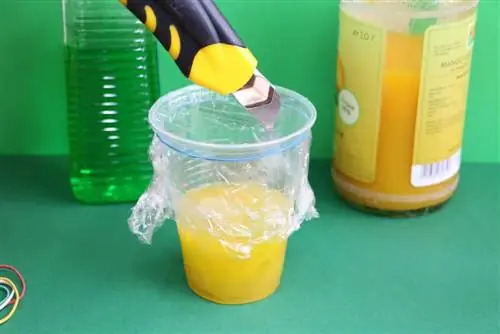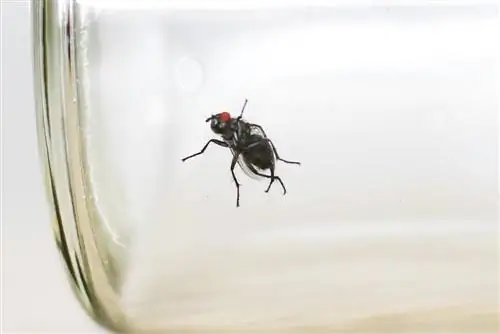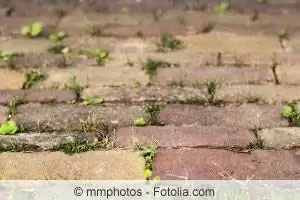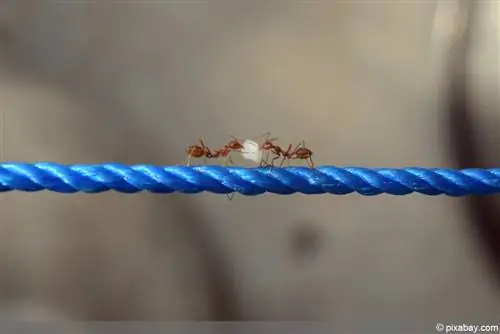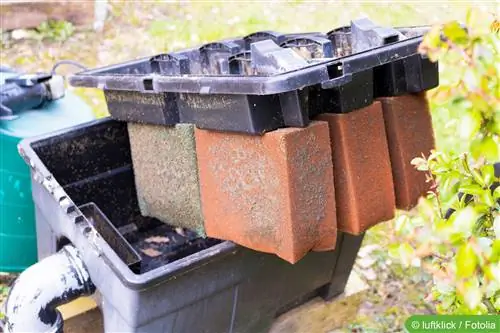- Author admin [email protected].
- Public 2023-12-17 03:39.
- Last modified 2025-06-01 06:48.
Fly screens and closed doors are no guarantee of an insect-free home; for example, when ventilating or through an undetected hole in the fly curtain, flies get inside. The animals are usually not visible at first glance, but you can hear them humming, usually for days. Fly swatters are available in drugstores and supermarkets, but there is another way: with a number of useful home remedies, the pests can be combated effectively and almost by themselves.
Home remedies - the cheap alternative to chemical fly traps
Many hardware stores and specialist retailers offer insect killers that work quickly and precisely, but not in the long term. In addition, such products are made with a lot of chemical ingredients. Last but not least, such an alleged miracle cure often means a comparatively high investment for limited effectiveness. Ultimately, these products are used up quickly and do not work in the long term, they lose their power and have to be repurchased. In your own four walls you can find numerous utensils that cost no more than five euros, but provide even greater utility value. Flies like to hang out in the kitchen and that's exactly where some of the insect killers can be found. Individually or in combination, the utensils can be used to make fly killers.
Vinegar and dishwashing liquid - the ultimate fly trap
You need a tall bowl with a volume of 500 ml. The container is filled with 100 ml of vinegar and the same amount of dishwashing liquid. To obtain a uniform mixture, the liquids are mixed. The sweet and sour smell attracts the animals and encourages them to taste it. Once the flies have drunk the “juice”, they fall into the mixture and cannot escape. To maintain the effectiveness of the fly trap, refresh the product every two days as soon as the smell subsides. After all, the smell is what attracts the animals. The most important points are briefly summarized here:
- Vessel must be deep enough
- Liquid is a mixture of vinegar and dishwashing liquid
- regular renewal of the mixture to maintain the effect
Glue trap with flavor
Everyone knows the sticky strips that are hung in the desired places in the house. You can make such a fly trap yourself, although the principle remains the same. A strip of paper serves as the basis, and the width and length are chosen at your own discretion. A width of 3.5 centimeters and a length of 30 centimeters are ideal. Poke a small hole through one end, pull a thread and tie a loop. Smear honey or syrup on the piece of paper, enough to cover the strip evenly, and hang it up using the loop. The flies are attracted to the aroma and stick. You can't avoid changing it regularly, as an already occupied strip no longer attracts flies and the scent diminishes. The trap in a nutshell:
- Paper as adhesive base with loop for hanging
- Syrup or honey as a fly trap attractant
Catch flies alive
You need an empty 720 ml jam jar and fill it with a few leftover fruits, which attract the flies. Then place a cloth over the opening, with the ends just long enough to be attached. The support is fixed with rubber bands. It is important to tension the rubber just enough so that the insects can slip through. When the jar is full, you take it and its contents outside, where you release the animals. Summary of the live trap:
- Put leftover fruit in a glass
- Put a cloth over it to cover it, secure it loosely with rubber bands
- Putting animals outside
A honey jar for hunting flies
As with adhesive strips, an adhesive mass in the glass serves as a fly trap, 720 ml is ideal. Put clear honey in the preferably transparent container, as it is more liquid and sticks better. The lid is not screwed on. Depending on where the flies are most often, you place the fly trap. The smell attracts the insects, whereupon they want to suck up the honey and stick to it. Since this trap is a little more difficult to clean, it is worth waiting until a large number of animals have flown into the fly trap.
Tip:
You can dilute the honey with water and add dishwashing liquid. The cleaning agent serves to reduce surface tension, which means that the flies cannot hold on and make it impossible for them to fly away. The sweet trap at a glance:
- Container is an empty glass
- Use clear honey as it is more liquid and the flies stick better
- Leave the trap longer to collect lots of flies
Frequently asked questions
How often does the fly trap need to be replaced?
The time of the change depends on the number of flies already caught. The more animals have already accumulated, the faster the trap should be renewed or replaced. In addition, it is advisable to pay attention to the intensity of the smell. Animals are attracted to strong smells. Weaker aromas take time to take effect. Depending on the type of trap, it must be changed more often, for example with the vinegar trap.
Tip:
You can set up different fly traps at the same time to increase the number of catches. You also get an idea of which method will work out in the long run.
Why are there only a few flies in the trap?
In such situations you should reconsider the location of the fly trap. Most animals stay in the kitchen because they find a lot of food there and it is a smelly place, at least for the flies. The living room is also a popular place because this is also where people eat and drink. Generally speaking, setting up and attaching a fly trap is particularly worthwhile where you eat and drink. Another aspect of poor fishing success can be spilled liquid. Honey in particular drips quickly and sometimes remains undetected. Naturally, the insects will take care of the area that is easier to reach. Therefore, spilled honey, syrup and other household remedies should be wiped away immediately so as not to give the flies the opportunity to satiate themselves in the wrong place, which would make the actual fly trap uninteresting.

